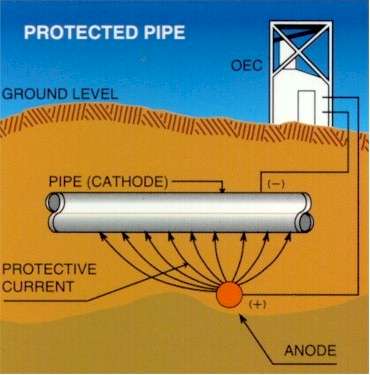cathodic protection

Cathodic protection by impressed current. Credit: Northern Arizona Wind & Sun.
Cathodic protection is a method of preventing oxidation (rusting) of exposed metal structures, such as bridges and pipelines, by imposing between the structure and the ground a small electrical voltage that opposes the flow of electrons and that is greater than the voltage present during oxidation.
A common form of cathodic protection is known as impressed current. With this technique a current is impressed between the buried structure and an anode. This forces a reversal of the current, and causes the anode to be consumed rather than the pipe.
